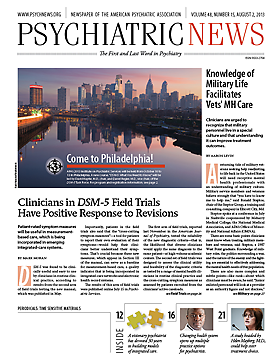The human brain has about 10 billion neurons, and each neuron has on average thousands of synapses that connect with other neurons. It is this complex network that enables us to function, behave, and think. But how does an axon of a neuron navigate its way to the right connection?
Since neuropsychiatric disorders are increasingly viewed as the result of miswired brain circuits, understanding the mechanisms of wiring is critical. In a study published June 6 in the journal Cell, Dilek Colak, Ph.D., and colleagues at Weill Medical College of Cornell University described a key process in neural growth that sheds light on the pathology of several neuropsychiatric disorders.
“Only in the past few years have we begun to see a link between the mechanism of RNA degradation to various neurological diseases, particularly mental retardation, autism, and early-onset schizophrenia,” Samie Jaffrey, M.D., Ph.D., a professor of pharmacology at Cornell and the senior author of the study, told Psychiatric News.
The mechanism of RNA degradation they studied is known as nonsense-mediated mRNA decay (NMD). When messenger RNA (mRNA) is made from DNA transcription and splicing, some mRNAs contain a stop codon, which is a sequence of ribonucleic acids signaling a stop to protein translation, at a location before the translation should be stopped. This type of mRNA is degraded through the process of NMD. Scientists previously thought NMD’s role is just to remove mRNAs that contain mistakes (for example, incorrect splicing that leaves a “nonsense” sequence in the mRNA), but recent research is finding that NMD is also part of the normal physiological function.
The Cornell researchers discovered that a form of mRNA for a roundabout (Robo) axon guidance receptor is important for directing axon growth and is regulated by the NMD mechanism. The Robo3 mRNA plays a key role in guiding a spinal neuron’s axon to cross the spine and grow in the direction it should, they found. A variant form of the Robo3 mRNA, Robo3.2, contains a premature codon, which causes it to be recognized and targeted by the NMD process. However, the Robo3.2 mRNA is not destroyed as soon as it is created. Rather, it is shipped to the tip of the axon, serves its purpose of directing the axon, and is then “chopped up” by the NMD mechanism.
The researchers also saw that the Robo3 RNAs and NMD-regulating proteins, for example, a type of proteins known as Upf, are concentrated in the growth cone, or the “tip,” of an axon.
They showed the importance of the NMD process by turning it off using nonfunctional genes for the proteins that regulate NMD. As a result, the Robo3.2 mRNA was not properly “cleaned up,” and the axon went in wrong directions. “We saw weird circuit formations because of incorrect axon trajectories,” Jaffrey said. Incorrectly wired circuits have been linked to various neuropsychiatric disorders, he pointed out.
“It’s been known that mutations in proteins involved in nonsense-mediated RNA decay cause abnormal connectivity in the brain and are linked to cases of mental retardation, autism, and childhood-onset schizophrenia, but exactly how NMD causes such abnormality is unknown. Our study is the first to show that the [NMD-related] proteins are found in axons as the axons move toward their targets in the brain,” Jaffrey explained. “If you don’t have the NMD proteins, or if they’re not functioning, you won’t have the proper circuits. It starts to reveal why mutations in these proteins ultimately lead to disorders.”
It is unknown whether NMD dysfunction is involved in the more common forms of neurodevelopmental diseases, but Jaffrey suggested that the NMD mechanism in neural circuits is a worthy area of investigation in several neuropsychiatric diseases.
Although the study was conducted using rat embryonic cells, human neurons continue to grow for years in childhood, which could provide a window of opportunity for correcting miswiring and dysfunction in brain circuits, Jaffrey believes. “We may potentially intervene early on, perhaps as soon as the child is diagnosed with autism or mental retardation.”
Next, Jaffrey and colleagues plan to study NMD regulation in human neurons using brain tissues from autopsy as well as induced pluripotent stem cells from patients who have the sporadic neurological disorders. An induced pluripotent stem cell is a stem cell derived from an already-differentiated cell, such as a skin or blood cell, which can subsequently be converted into a neuron. “We hope to see directly whether these patients’ neurons have different levels of NMD in the axons compared with normal people’s neurons,” he said.
The study was funded by the National Institutes of Health and European Molecular Biology Organization. ■
